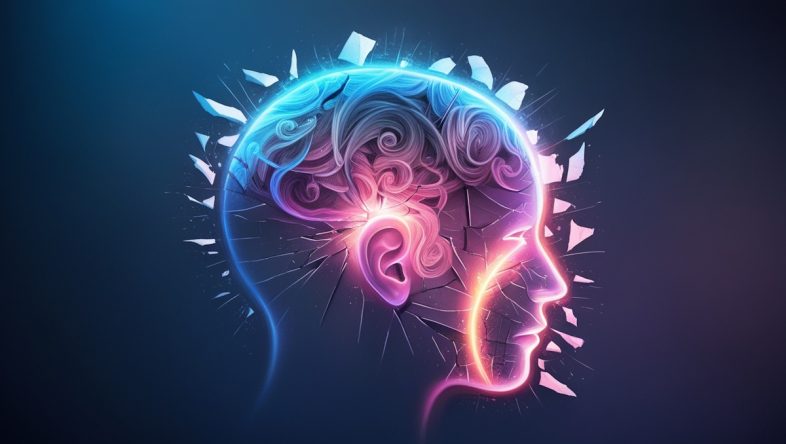Understanding PTSD Symptoms: A Comprehensive Guide
In this comprehensive guide, we will explore what PTSD is, shedding light on its causes, the common misconceptions that surround it, and current statistics that highlight its prevalence. We will also delve into the core PTSD symptoms, providing detailed descriptions and helping you recognize the early warning signs. Furthermore, we will discuss the profound impact these symptoms can have on daily life and well-being, offering practical strategies for management and support. By gaining a deeper understanding of PTSD symptoms, you will be better equipped to recognize, empathize with, and support those affected by this debilitating disorder.
Whether you are personally affected by PTSD, supporting a loved one, or seeking to broaden your knowledge, this guide serves as a valuable resource. Join us as we navigate through the complexities of PTSD symptoms, armed with compassion, knowledge, and the shared goal of fostering a more profound understanding of this challenging condition.
What is PTSD? An Overview of Post-Traumatic Stress Disorder
Post-Traumatic Stress Disorder (PTSD) is a mental health condition triggered by experiencing or witnessing a traumatic event. These events can range from personal assaults, natural disasters, wars, accidents, and more. For individuals suffering from PTSD, the aftermath of trauma manifests as a complex set of symptoms that persist long after the initial threat has passed. Understanding PTSD is crucial for recognizing how deeply it can impact individuals and for providing the necessary emotional and psychological support.
Explanation of PTSD and Its Causes
PTSD develops as an abnormal response to severe stress. While it is natural to feel afraid or anxious immediately following a traumatic event, PTSD occurs when these feelings do not fade over time and instead worsen. The exact cause of PTSD is not entirely understood, but experts believe it is likely due to an interplay of factors including:
- Genetic predisposition: Some individuals may have a genetic vulnerability that makes them more susceptible to PTSD.
- Neurobiological factors: Trauma impacts the brain’s fear response mechanisms, potentially leading to changes in brain function and structure.
- Environmental influences: A person’s life experiences, including childhood adversities, support systems, and previous traumas, can also affect PTSD development.
- Psychological factors: A person’s coping style, personality, and mental health history play significant roles in how they deal with trauma.
Moreover, not everyone who goes through a traumatic event will develop PTSD, and factors like resilience, emotional support, and timely intervention can mitigate the risk.
Common Misconceptions About PTSD
Several misconceptions about PTSD continue to circulate, which can hinder understanding and support for those affected. Let’s debunk some of these myths:
- Myth: PTSD only affects military veterans.
- Reality: While military personnel are at high risk due to their exposure to combat, PTSD can affect anyone who has experienced trauma, regardless of their occupation.
- Myth: PTSD is a sign of weakness.
- Reality: PTSD is not a reflection of one’s strength or character. It is a medical condition that requires understanding and proper treatment.
- Myth: People with PTSD are violent and dangerous.
- Reality: While PTSD can lead to irritability and anger, it does not automatically make someone violent. Each person’s experience with PTSD is unique.
- Myth: PTSD is a lifelong condition.
- Reality: With appropriate treatment and support, many individuals can manage their symptoms effectively and lead fulfilling lives.
Statistics and Prevalence Rates
Understanding the prevalence of PTSD can help in recognizing its impact on society. According to the American Psychiatric Association:
- About 3.5% of adults in the U.S. experience PTSD each year.
- Approximately 1 in 11 people will be diagnosed with PTSD in their lifetime.
- Women are twice as likely as men to develop PTSD.
These statistics underscore the importance of awareness and proactive mental health initiatives. Certain populations such as military veterans, first responders, and survivors of violence or abuse are at higher risk and may require targeted support systems.
Recognizing PTSD and debunking myths associated with it are critical steps towards fostering a supportive environment for those affected. By creating a culture of understanding, offering compassion, and ensuring access to effective treatments, we can help individuals navigate the challenges of PTSD and promote their overall well-being.
Common PTSD Symptoms: Recognizing the Signs and Manifestations
Understanding the symptoms of Post-Traumatic Stress Disorder (PTSD) is crucial to recognizing and addressing this condition. PTSD symptoms can deeply affect an individual’s daily life and overall well-being. Below is a detailed description of the primary PTSD symptoms: intrusive thoughts, avoidance behaviors, negative changes in cognition and mood, and hyperarousal and reactivity symptoms. Additionally, we will explore how symptoms can vary among individuals and discuss early warning signs to be aware of.
Intrusive Thoughts
One of the hallmark PTSD symptoms is experiencing intrusive thoughts related to the traumatic event. These intrusive memories can manifest as flashbacks, which may make the individual feel as though they are reliving the traumatic event. Nightmares and distressing dreams about the trauma are also common manifestations of intrusive thoughts. These symptoms can be triggered by reminders of the event or can occur spontaneously, making it difficult for the person to maintain focus and perform daily activities.
Avoidance Behaviors
Avoidance behaviors are another significant category of PTSD symptoms. Individuals with PTSD often go to great lengths to avoid places, people, and activities that might remind them of the traumatic event. This can include avoiding talking about the incident or steering clear of situations and conversations that might trigger memories of the trauma. Over time, this avoidance can severely limit an individual’s lifestyle and create additional stress and isolation.
Negative Alterations in Cognition and Mood
PTSD symptoms also commonly include negative changes in cognition and mood. These can range from feelings of detachment from others to a persistent negative emotional state. For instance, individuals might experience ongoing feelings of sadness, guilt, or anger. They may also struggle with negative beliefs about themselves or the world, such as thinking they are at fault for the event or that the world is completely dangerous. Loss of interest in activities once enjoyed and a sense of purposelessness are further manifestations of these mood changes.
Hyperarousal and Reactivity Symptoms
Hyperarousal and reactivity symptoms refer to the heightened state of alertness that individuals with PTSD often experience. This can manifest as chronic irritability, difficulty concentrating, being easily startled, or having trouble sleeping. Such symptoms are the body’s way of remaining prepared for potential danger, even when no immediate threats are present. Over time, the continuous state of hyperarousal can lead to considerable physical and emotional exhaustion.
Variability of Symptoms Among Individuals
It is important to note that PTSD symptoms can vary widely from person to person. Factors such as the nature and severity of the trauma, the individual’s previous mental health history, and their social support network can all influence the intensity and presentation of symptoms. For example, some individuals may predominantly experience intrusive thoughts, while others might primarily exhibit avoidance behaviors. The variability means that while there are common symptom categories, each person’s experience with PTSD is unique.
Early Warning Signs to Watch Out For
Early recognition of PTSD symptoms can be essential for timely intervention and support. Some initial warning signs might include significant changes in mood and behavior soon after experiencing a traumatic event. This could include sudden withdrawal from social activities, drastic changes in sleep patterns, or a noticeable increase in irritability and anger. Another early warning sign is the absence of joy or interest in activities that were previously enjoyable.
Additionally, it is crucial to pay attention to any unexplained physical symptoms, such as headaches, digestive issues, or chronic pain, as these could be related to the stress and anxiety associated with PTSD. Being vigilant about these early signs can facilitate early intervention measures, which are vital in mitigating the long-term effects of PTSD symptoms.
Understanding these common PTSD symptoms equips individuals, families, and professionals with the knowledge needed to identify and address PTSD effectively. By recognizing the signs and manifestations of PTSD symptoms early, it becomes possible to seek appropriate help and support, ultimately leading to better outcomes for those affected by this challenging condition.
The Impact of PTSD Symptoms on Daily Life and Well-being
PTSD symptoms do more than occupy the mind; they can significantly alter an individual’s daily life and overall well-being, influencing everything from physical health to social interactions and career performance. Let’s explore how the pervasive nature of PTSD manifests in various aspects of life and discuss effective strategies for managing these challenges.
Physical and Emotional Effects of PTSD Symptoms
Individuals with PTSD often experience a range of physical symptoms that can include chronic pain, headaches, and gastrointestinal issues. Stress and anxiety stemming from PTSD can exacerbate these conditions, making them more troublesome. Additionally, insomnia and other sleep disorders are commonly observed in PTSD sufferers, further detracting from their physical health.
Emotionally, PTSD symptoms can lead to intense feelings of fear, sadness, and helplessness. The disruption of emotional regulation may result in mood swings, irritability, and perpetual anxiety. This emotional turmoil can impede an individual’s ability to engage in everyday activities, erode their quality of life, and contribute to the development of secondary mental health issues such as depression.
The Social and Occupational Impact of Living with PTSD
Beyond the internal struggles, PTSD also has profound ramifications on social relationships and occupational stability. Individuals with PTSD may isolate themselves due to the intense nature of their symptoms, creating strain within familial and social circles. Relationships with loved ones can suffer as a result of the emotional volatility and withdrawal typical of PTSD.
Occupationally, the cognitive impairments associated with PTSD, such as difficulty concentrating, memory issues, and decision-making challenges, can affect job performance. The hyperarousal symptoms often lead to an increased vulnerability to workplace stress, which can result in absenteeism, reduced productivity, and even job loss. It’s crucial to acknowledge that PTSD can undermine one’s ability to maintain consistent and dependable employment.
Strategies for Managing and Coping with PTSD Symptoms
Therapy and Counseling Options
Therapeutic interventions are central to managing PTSD symptoms. Cognitive Behavioral Therapy (CBT), particularly trauma-focused CBT, has shown significant efficacy in helping individuals process and overcome traumatic experiences. Eye Movement Desensitization and Reprocessing (EMDR) is another therapy modality that has garnered positive outcomes for PTSD sufferers. Both approaches aim to reduce the severity of symptoms by altering the thought patterns associated with trauma.
Seeking the guidance of a mental health professional experienced in PTSD is essential. Whether opting for individual therapy, group therapy, or a combination of both, therapy provides a structured environment for individuals to explore their trauma and develop coping mechanisms.
Support Groups and Community Resources
The road to managing PTSD is often paved with the support of others who understand the struggle. Support groups offer a sense of community and validation, where individuals can share their experiences and gain insights from others who have faced similar challenges. These groups are typically facilitated by professionals who can provide accurate information and resources.
Community resources, including non-profit organizations and local mental health agencies, often provide access to affordable or free counseling services, educational seminars, and crisis intervention programs. Utilizing these resources can make a significant difference in managing PTSD symptoms effectively.
Lifestyle Changes and Self-Care Practices
While professional help is paramount, adopting a robust self-care regimen can augment recovery and foster resilience. Regular physical exercise has been shown to alleviate stress and improve mood by releasing endorphins. Simple activities like walking, yoga, or swimming can have profound effects on both mind and body.
Mindfulness and relaxation techniques, including meditation, deep breathing exercises, and progressive muscle relaxation, can help individuals regain control over their anxiety and reduce the intensity of intrusive thoughts. These practices cultivate a sense of calm and presence, which is essential for overall emotional well-being.
Establishing a healthy routine is critical for managing PTSD symptoms. Consistent sleep patterns, balanced nutrition, and avoiding substances such as alcohol and drugs that can exacerbate symptoms are vital steps. Additionally, engaging in hobbies and activities that bring joy and relaxation can provide a much-needed reprieve from the stressors of daily life.
In summary, PTSD symptoms profoundly affect various aspects of an individual’s life. The physical and emotional toll is often compounded by social and occupational challenges. However, with a combination of professional therapy, community support, and dedicated self-care practices, individuals with PTSD can find pathways to recovery and lead fulfilling lives. Recognizing the impact of PTSD on daily life underscores the importance of holistic and comprehensive management strategies in navigating this complex condition.
Conclusion: Moving Forward with Understanding and Compassion
Post-Traumatic Stress Disorder (PTSD) is a complex condition that affects many individuals worldwide, yet it remains surrounded by misconceptions and stigmas. By breaking down the core components of PTSD and recognizing its diverse manifestations, we can foster a better understanding and empathy toward those who are affected. PTSD symptoms, including intrusive thoughts, avoidance behaviors, cognitive and mood alterations, and hyperarousal, profoundly impact an individual’s daily life and well-being.
Living with PTSD can be incredibly challenging, both physically and emotionally. The social and occupational toll is considerable, and without proper support and treatment, the road to recovery can seem daunting. However, there is hope. Effective strategies for managing PTSD symptoms range from therapy and counseling options to support groups and community resources. Incorporating lifestyle changes and self-care practices also plays a pivotal role in the journey toward healing and resilience.
As we move forward, it is crucial to continue educating ourselves and others about PTSD symptoms and their far-reaching effects. By promoting awareness and compassion, we can create environments that support those living with PTSD, ultimately contributing to their well-being and recovery. Remember, understanding is the first step toward healing. Let us stand together to support those who courageously face PTSD every day.


